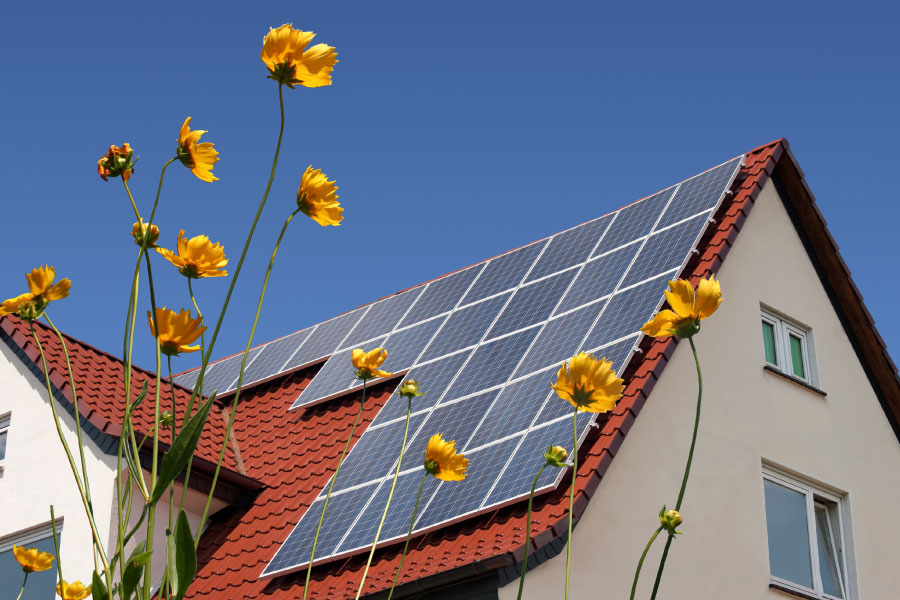Feb 16, 2021
When Passive is Positive
A passive house saves the environment and the owner from damages and high expenses.
By: Amara Rose

Being passive in business isn’t smart. But when it comes to creating a healthy, energy efficient home, being passive is very, very smart. Passive House, that is.
Passive House is a voluntary, ultra-low energy building standard that creates structures so efficient they don’t require typical heating or cooling systems. The term originated with physicist Wolfgang Feist, cofounder of the German-based Passivhaus Institut.
It’s the most rigorous building energy standard in the world. While just catching on in North America, Passive House has been widely adopted in Europe for both new construction and retrofits of all types of buildings. (The German word “haus” means “building”.)
One of the first U.S. Passive House retrofits took place in Sonoma, California several years ago. The owner of the older, ranch-style residence can now heat her home with the energy equivalent of a hair dryer. In mid-winter.
Passive House vs. Passive Solar
People tend to confuse Passive House with passive solar, but there are several crucial distinctions. While both types of construction make use of the sun and southern exposure, Passive House relies on maximum insulation and exceeds LEED (Leadership in Energy & Environmental Design) requirements.
A Passive House must meet three rigorous standards:
- Air leakage. The home must pass a physical test to meet the exacting German standard, which permits only a fraction of the air leakage common to typical American construction.
- Heating/cooling allowance. The average new home built to current code requires nearly ten times more energy to maintain interior comfort than the Passive House Standard.
- Energy use. The maximum allowable energy usage can’t exceed 11.1 kWh per sq. ft., which is less than half (or in some cases, a third) of normal home energy consumption.
“Passive solar is like a tide that washes in and out every day, creating huge temperature fluctuations. Passive House is like a thermos bottle, maintaining even temperature control through proper insulation,” explains Certified Passive House consultant Graham Irwin.
“Passive solar is an approach to building that uses heat from the sun to directly heat a building, whereas Passive House is a performance standard, based around long-standing principles, carefully analyzed and modeled for cost optimization, rather than relying on equipment (e.g., a furnace or air conditioner). A Passive House, once constructed, is energy efficient and saves you money forever.”
A House That Breathes
While a Passive House is exceptionally airtight, it also “breathes,” rendering it closer to nature in construction than more conventional homes. Inspire literally means, “breathe into,” and a Passive House both breathes, and enables its inhabitants to breathe more easily.
The Energy Recovery System (ERV) serves as the “lungs” of a house. Drastically smaller than a typical HVAC (heating/ventilation/air conditioning) system, an ERV operates at very low volume. With all the windows closed, every spot in a Passive House is designed to stay the same temperature, regardless of season: a comfortable 68 to 74 degrees. Yet opening the windows, even at night, does not affect the ventilation system.
Optimization is a core concept: the building as a unit is more efficient than any single appliance or room.
The Fundamentals of Sustainable Shelter
Passive House is also a step in the direction of what social scientist Duane Elgin calls “voluntary simplicity.” He says, “The world is moving into a new era where the human community must work together if we are to realize a future of sustainable prosperity. We are being called to make a shift toward green lifestyles, guided by the collective wisdom of science and spirituality.”
His words echo those of living systems activist Joanna Macy, author of World As Lover, World As Self – Courage for Global Justice and Ecological Renewal: “For me, beauty resides in authenticity. Those people whom I most admire have turned away from the super-fluidity and cluttered materialism and returned to the beauty of the natural world and objects made by human hands, the texture of wood, the woven basket, the mixing of compost into soil in the back garden, a good soup cooking on the stove, an evening around the table with family and friends. Rediscovering this kind of beauty involves a slowing down, doesn’t it? And it certainly involves listening to the priorities of the heart.”
Passive House is an architectural return to the priorities of heart and soul: a model that enables humans to live in harmony with our Earth, embracing the principles of deep ecology.





